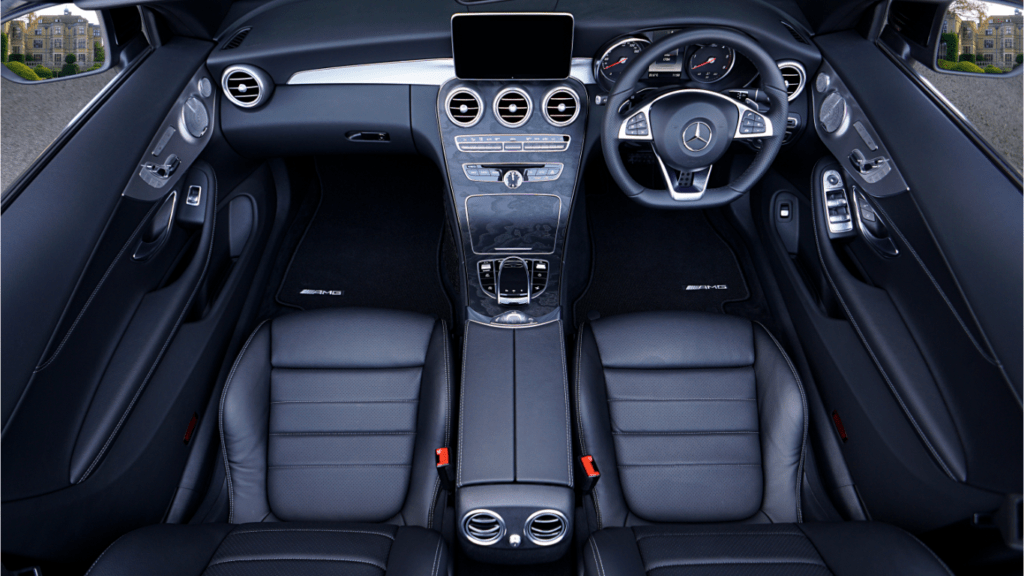Understanding Aftermarket Tech
Aftermarket tech refers to any enhancements or modifications made to your vehicle after its initial purchase. These upgrades can add new features or improve existing ones, bridging the technology gap between older cars and modern vehicles.
Types of Aftermarket Tech
Aftermarket tech encompasses various devices and systems. Here are a few key categories:
- Navigation Systems use GPS to provide real-time directions and help drivers find efficient routes.
- Infotainment Systems combine entertainment and information functions, often integrating radio, media players, and connectivity options.
- Advanced Driver Assistance Systems (ADAS) include features like parking sensors, lane departure warnings, and adaptive cruise control.
- Diagnostic Tools offer real-time monitoring of your car’s health, providing insights on performance and potential issues.
Benefits of Aftermarket Tech
Adding aftermarket tech to your vehicle offers numerous benefits:
- Enhanced Safety: Features like backup cameras and blind-spot monitoring improve overall safety.
- Increased Convenience: Voice-activated assistants and keyless entry make daily driving more convenient.
- Better Connectivity: Integrating smartphones with your car allows seamless access to calls, messages, and navigation apps.
- Improved Efficiency: Real-time diagnostics help maintain optimal performance and can prevent costly repairs.
Considerations for Aftermarket Tech
When considering aftermarket tech, keep these factors in mind:
- Compatibility: Ensure the tech integrates well with your car’s existing systems.
- Budget: Evaluate the cost of the upgrades and determine if they fit within your budget.
- Installation: While some devices are easy to install, others might require professional help.
- Warranty: Check if adding aftermarket tech affects your vehicle’s warranty. Some modifications might void certain aspects of it.
Understanding the array of options and benefits can help you decide which aftermarket tech upgrades are right for making your car smarter and more connected.
Essential Upgrades for a Smarter Car

Upgrading older cars with aftermarket tech transforms them into smart vehicles. Essential upgrades cover infotainment systems, advanced safety features, and smart connectivity options.
Infotainment Systems
Infotainment systems modernize vehicles with touch-screen interfaces, navigation, and media controls. Adding a double DIN system can provide features like Apple CarPlay and Android Auto, integrating smartphones seamlessly. Examples include the Pioneer AVH-W4500NEX and the Alpine iLX-W650. These systems enhance user experience by offering voice controls and hands-free calling, reducing distractions and improving safety.
Advanced Safety Features
Advanced safety features can significantly improve driver and passenger safety. Adding a rearview camera, for instance, helps with parking and reversing. I recommend models like the Garmin BC 40 or AUTO-VOX CS-2. Forward collision warnings (FCW) and lane departure warnings (LDW) systems, such as those from Garmin or YI Mirror Dash, alert drivers to potential hazards. These features boost awareness and help prevent accidents.
Smart Connectivity Options
Smart connectivity options keep you connected on the go. Installing a Wi-Fi hotspot device, like the Verizon Jetpack MiFi 8800L, ensures constant internet access. Bluetooth adapters, such as the Anker SoundSync A3352, enable hands-free calls and streaming from mobile devices. These enhancements make it easier to stay connected, access apps, and navigate, enhancing both safety and convenience.
Installation and Integration
Enhancing an older car with aftermarket tech involves careful installation and integration. It’s crucial to balance professional assistance and DIY efforts.
Professional Installation vs. DIY
Opting for a professional installation offers precision. Experts possess the tools and know-how to manage complex setups, reducing risks of damage. For instance, integrating advanced driver assistance systems (ADAS) often requires calibration that only professionals can efficiently perform. While this might cost more upfront, it’s an investment in quality and safety.
DIY installation provides an economical alternative. Many aftermarket gadgets, like Bluetooth adapters and Wi-Fi hotspot devices, feature user-friendly instructions and minimal setup requirements. Enthusiasts enjoy the flexibility and cost savings, though they must account for learning curves and the potential need for troubleshooting.
Compatibility Checks
Ensuring compatibility with existing vehicle systems is essential. Before purchasing any tech, confirm that it’s designed for your car’s make and model. Retrofitting a new infotainment system, for example, might demand specific wiring harnesses or adapters, which can be verified via manufacturer guidelines.
Examining the car’s electronic and mechanical layouts helps avoid integration issues. Some systems might interfere with existing components if they aren’t compatible. Researching user manuals and consulting forums can provide additional insights into successful integrations.
Considering these factors ensures a smoother transition to a smarter car, leveraging aftermarket tech effectively.
Benefits of Aftermarket Tech
Aftermarket tech upgrades can dramatically improve the functionality and enjoyment of your vehicle. These enhancements provide numerous advantages, making your car smarter and more efficient.
Enhanced Driving Experience
Aftermarket tech significantly improves the driving experience. Modern infotainment systems, like touch-screen interfaces, offer seamless smartphone integration, enabling easy access to navigation apps, music, and hands-free communication. Devices like the Pioneer AVH-W4500NEX provide Apple CarPlay and Android Auto, delivering a smooth, connected traveling experience. Upgrading the audio system with high-quality speakers and amplifiers also enhances sound quality, making each drive more enjoyable.
Increased Vehicle Safety
Safety ranks high among benefits. Advanced Driver Assistance Systems (ADAS) such as collision warning and adaptive cruise control reduce the chances of accidents. Aftermarket rearview cameras and parking sensors, for example, like the Garmin BC 40, significantly aid in safe maneuvering in tight spaces. Moreover, tire pressure monitoring systems (TPMS) ensure your tires remain at optimal inflation levels, preventing blowouts and improving fuel efficiency. Adding these safety features transforms your older vehicle, making it comparable to newer models in terms of safety.
Potential Challenges
Upgrading your car with aftermarket tech enhances its capabilities, but it isn’t without its challenges. Two significant hurdles are cost considerations and technical issues.
Cost Considerations
Upgrading to smarter car tech can be expensive. High-end infotainment systems and advanced safety features often come with hefty price tags. For instance, a top-tier infotainment system like the Pioneer AVH-W4500NEX can cost around $700, while advanced driver assistance systems (ADAS) may run over $1,000. These costs add up quickly when considering multiple upgrades. Budget constraints might force some compromises on the types of tech or brands you can choose. It’s essential to balance desired features against their cost to stay within your budget while getting the best value.
Technical Issues
Technical issues might arise during the installation and integration of aftermarket tech. Compatibility with existing vehicle systems can be a primary concern. Not all older cars support modern tech seamlessly, potentially causing functionality issues or system malfunctions. For example, integrating an advanced safety feature like a collision warning system requires precise alignment with the car’s electronics, which isn’t always straightforward.
DIY installations can lead to errors if you lack the necessary skills. Improper installations might result in tech failures or even compromise vehicle safety. Professional installation minimizes these risks but adds to the overall cost. Additionally, some upgrades may void existing vehicle warranties, making it risky to proceed without thorough research.
Understanding these challenges helps car owners make informed decisions about their aftermarket tech upgrades, ensuring a smoother transition to a smarter vehicle.




